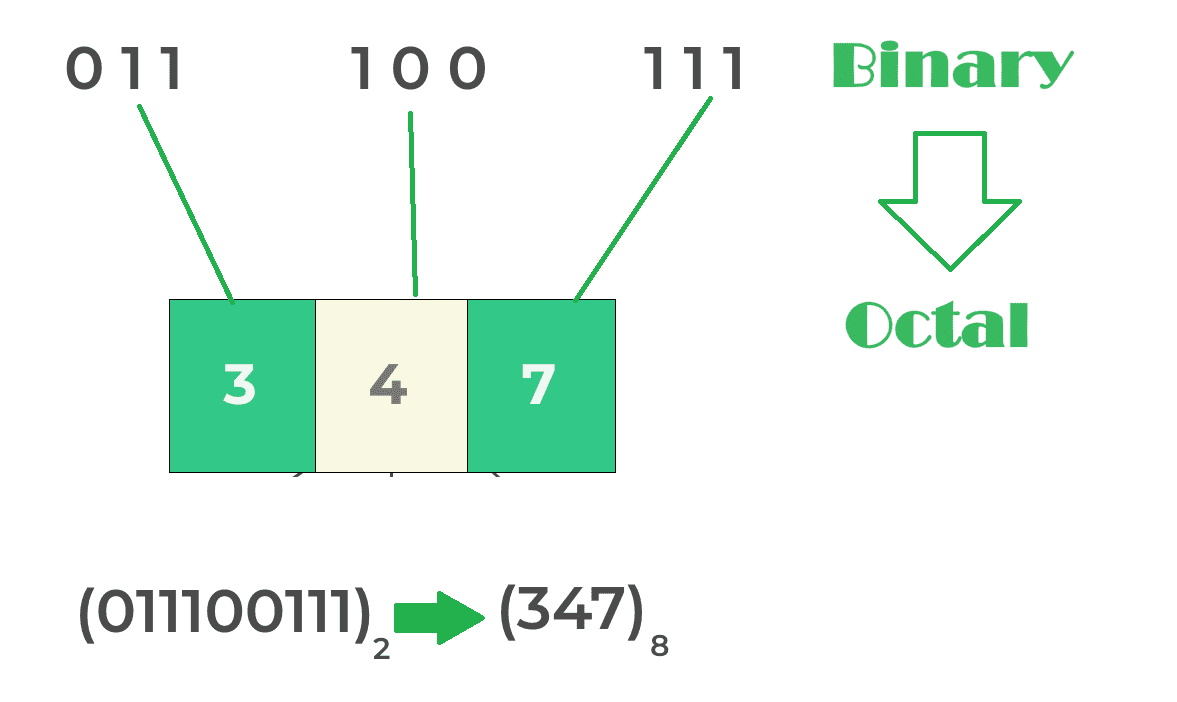Binary To Octal Converter
Converting steps:
How to convert a binary number to the octal number?
Converting binary to octal involves grouping binary digits into sets of three, finding the octal equivalent for each group, and combining the results to get the final octal representation. It is based on the fact that 23 = 8 allowing the direct mapping of three binary digits to one octal digit. Converting binary to octal is super easy. We know that the base of binary is 2 and base the of octal is 8, so we can make a relation between 2 ⇔23⇔ 8. It means if we convert 3 binary digit into 1 digit, it will be converted into octal.

Example of binary to octal conversion.
(10111.1011)2 = (?)8 or make a conversion binary to octal.
| Binary = | 0 1 0 | 1 1 1 | . | 1 0 1 | 1 0 0 |
|---|---|---|---|---|---|
| Chunk = | _____ | _____ | . | _____ | _____ |
| Arrows = | ↓ | ↓ | . | ↓ | ↓ |
| Octal = | 2 | 7 | . | 5 | 4 |
Result is: (27.54)8
[N:B: Take only 3 binary digit to make octal. If you do not have enough binary digit to make 3 digit before floating point then add extra 0 in the most left side before floating point and if you need to make 3 digit after floating point then add a extra 0 in the most right side after floating point, as like example.]
Binary to Octal conversion table
| Binary | Octal |
|---|---|
| 0 | 0 |
| 1 | 1 |
| 10 | 2 |
| 11 | 3 |
| 100 | 4 |
| 101 | 5 |
| 110 | 6 |
| 111 | 7 |
| 1000 | 10 |
| 1001 | 11 |
| 1010 | 12 |
| 1011 | 13 |
| 1100 | 14 |
| 1101 | 15 |
| 1110 | 16 |
| 1111 | 17 |
| 10000 | 20 |
| 10001 | 21 |
| 10010 | 22 |
| 10011 | 23 |
| 10100 | 24 |